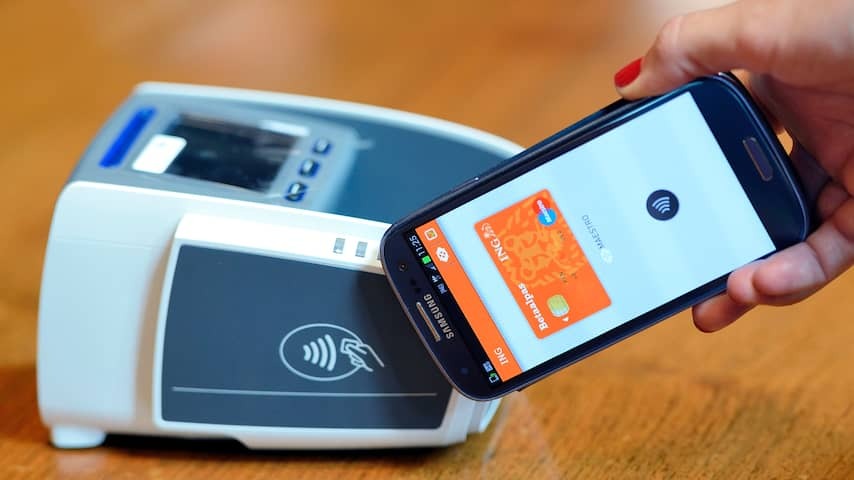
A delicious cappuccino on the go, a bag of churros at the market, a newspaper at the gas station: it’s all paid for with a swipe of your phone. Mobile payments are convenient and safe, but make the hole in your pocket even bigger. How do you control yourself?
You hardly need a debit card anymore if you have mobile payments installed on your phone. In 2023, more than seven out of ten payments at the checkout were contactless. Research by the Dutch Payments Association and De Nederlandsche Bank shows that more and more contactless payments are made with a phone or smartwatch. In 2021, that was 29 percent, compared to 21 percent a year earlier.
It’s fast, safe, and easy. And so, you also make an impulse purchase incredibly quickly. You no longer have to search for your debit card. Yet, budget coach Ankie Horjus thinks it’s better to remove payment apps from your phone.
“In my experience, it’s an extension of the debit card pitfall. Beep, and done. And then you always spend more than you think. Just this, just that, because it’s only two or four euros. Add up those small amounts per month. If you multiply that by twelve, in most cases you’ve wasted a very nice weekend away in one year.”
For those who don’t know yet: this is how mobile payments work
With mobile payments, you link your debit card to a payment app such as Apple Pay, Google Pay, or Samsung Pay. If you want to pay for something, you unlock your phone with a password, fingerprint, or facial recognition and hold your phone or smartwatch to the payment terminal. You’ve paid within a second.
Saving six euros a day earns you 2,190 euros in a year, a quick calculation teaches us. Try these tips if your money disappears too quickly due to mobile payments:
Set a strict limit
You can set a limit for contactless payments without a PIN code. For example, make it twenty euros. This way you are not tempted to spend more and you have enough for a quick, much-needed purchase.
Turn off Apple Pay or Google Pay
Try going without it for a while. Turn off your Apple Pay or Google Pay completely; you do this by going to your Wallet or Google Wallet and removing your debit card.
Pinning and Saving
Most banks offer this service: automatic rounding. It is called something different at each bank. Rabobank calls it ‘Pinsparen’, ING calls it ‘Rond af en Spaar’ and at bunq it’s called ‘Auto Save’. Automatic rounding means that every payment is rounded up and the difference is put into a savings account. For example: you pay 2.70 euros. The bank rounds that off to 3 euros and that 30 cents automatically goes to the savings account. You therefore spend even more with all those small payments, but you do see it back on your savings account.
Use the tools of your bank app
Your bank has come up with all sorts of things to get you to save. Make use of that. For example, ASN Bank, SNS Bank, ING, Rabobank and RegioBank offer the option to create budgets to keep a grip on your expenses. You set a budget for, for example, clothing, groceries or impulse purchases in the ‘treat culture’ category. You can classify unnecessary purchases under this, such as gadgets, checkout bargains, coffee to go or products that you do not need with very high discounts. This way you get a clear overview of how much you spend on tempting, unnecessary expenses.